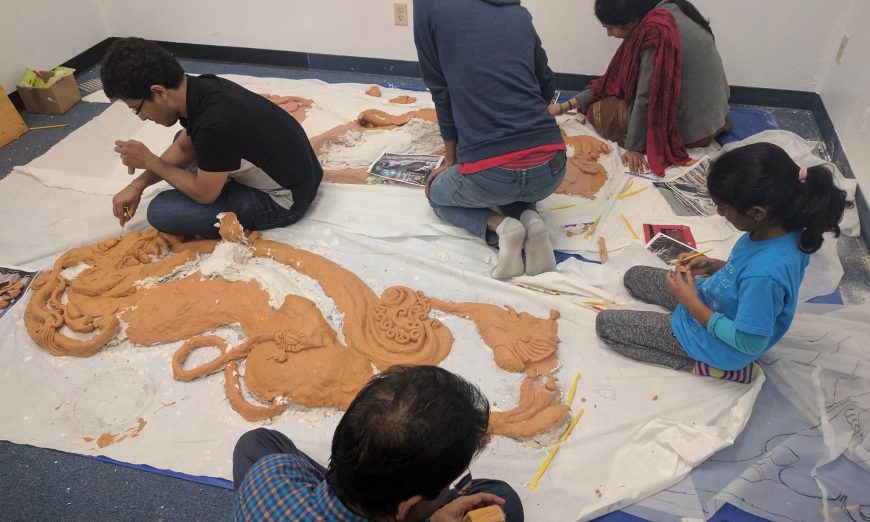Originally from Vijayawada in Southern India, Venu Devu came to the Bay Area to work as a data engineer. Experiencing the pressures of a demanding work week, he decided to return to his roots on evenings and weekends as a way to relieve stress and enrich the lives of others.
Devu is an eighth generation sculptor and artist from a tradition that dates back to the Vijayanagara empire — his ancestors produced art for Emperor Sri Krishna Raya. This ancient craft was passed to him from the age of five by his father, and, in 2015, Devu began Srishti Gurukul, an art school on Agate Drive in Santa Clara that seeks to preserve the art forms of ancient India.
“My family has a long tradition in a combined profession doing architecture, sculpture and ornaments,” Devu said. “I was trained in India from a young age and would follow my father to work on temple projects. Back home my relatives still do the work, following a set of codified rules.”
The classes offered by Devu at Srishti Gurukul, cover the basic fundamentals of classic Indian art and also provide advanced instruction for students who want to acquire greater skills. As there are several religious traditions that grew out of ancient India, the artworks produced at the classes cover a range of spiritual expressions based on the interests of individual students.
All are welcome to attend classes and there are sessions geared for both children and adults. The beginners sessions start with basics of figure drawing and composition and progress to three dimensional works. Students will often start by learning to portray hands and gestures of a particular deity, and then progress to faces, expressions and garments.
Devu described the classes as “action packed” and said that even by arriving as little as five minutes late to a class, a student can miss essential instructions. Sessions generally run from 9 a.m. to 11 a.m. on Saturdays, but Devu will often begin working as early as 6 a.m.
The beginners sculpture classes are conducted using clay with silicone molds that can last for 25 years. The course fee for 12 beginner’s classes is $360 and covers all expenses for materials. Students lacking the funds can volunteer at the Sri Kamakshi Temple in Santa Clara.
The completed works are displayed at various Hindu temples in the area and help raise funds to keep the temples afloat.
From 2015 onward, word of Devu’s efforts quickly spread and priests from local temples in the Hindu Vedic tradition contacted him about expanding his class schedule. For now, Devu’s packed schedule just permits him to teach in Santa Clara, but he hopes to offer more classes in the future.
When he’s not teaching or working as an engineer, Devu helps restore sacred sculptures at the Sri Kamakshi Temple. He’s also undertaken restoration projects at Sri Siddhi Vinayak Community Centre Temple in Fremont, Sri Datta Sai Temple in San Ramon and Sri Krishna Vrindavan Temple in San Jose.
The temple projects involve working with ceremonial-grade precious metals as well as brass and bronze. Iron can’t be used in rituals and the clay sculptures are more for decorative purposes. Once more students advance through his basic and intermediate classes, Devu hopes that students will be able to apprentice with him and learn the metal sculpting trade and architectural works that were passed down to him.
“Right now I teach classes whenever I can,” said Devu. “The plan is to expand in such a way that helps bring back the lost folk arts and preserves tradition. Many people are not even aware that Indian folk art exists at all.”
The preservation of traditional arts are also under threat in India. Devu explained that with the industrialization of the country’s major cities, has come a demand for cheaper works that are produced by machines. He said traditional craftspeople, including some of his family members, can no longer afford to make a living making art and have migrated to other professions.
If one wants to procure custom-made artwork in India today, you have to commission artisans in rural areas to produce quality works, he said.






